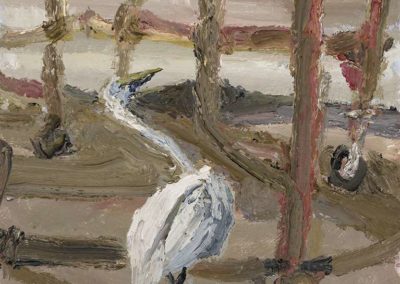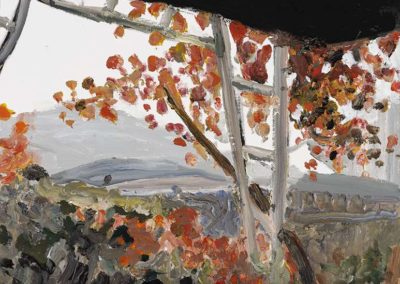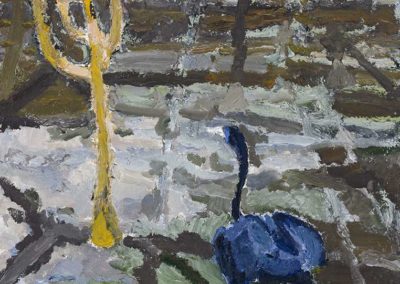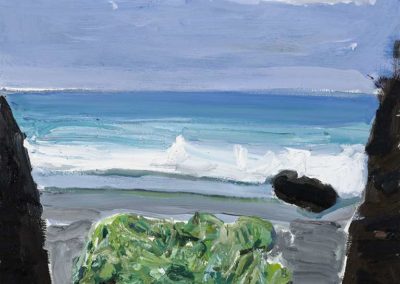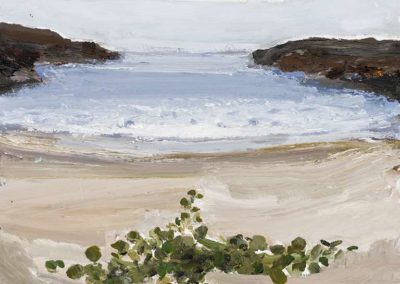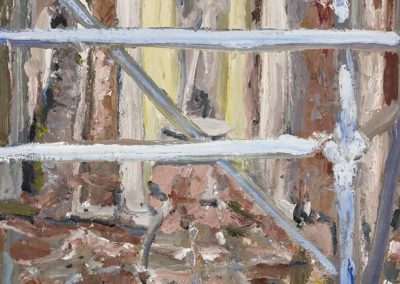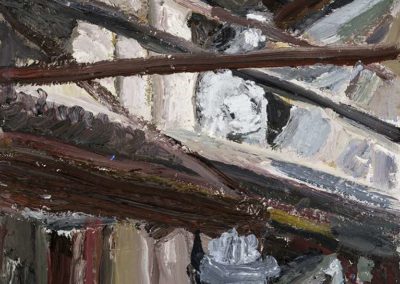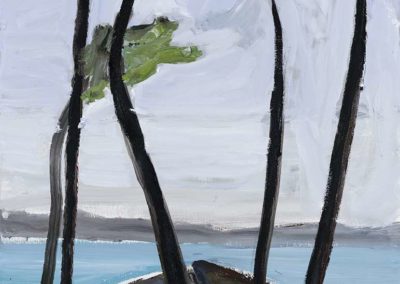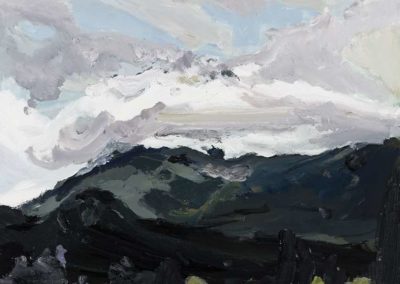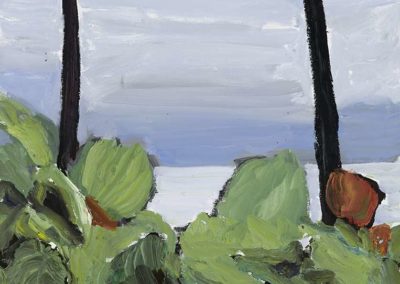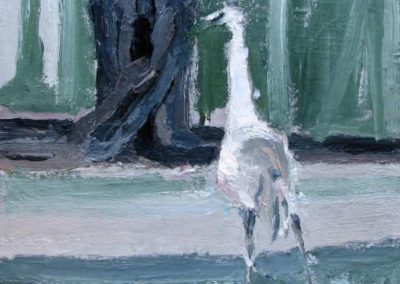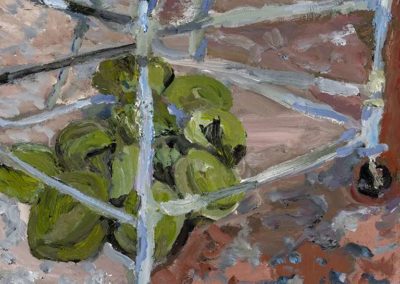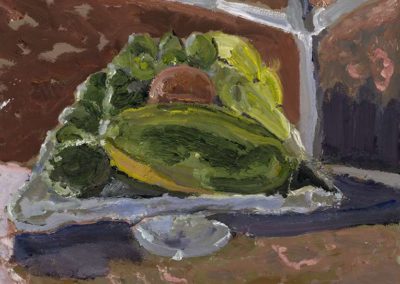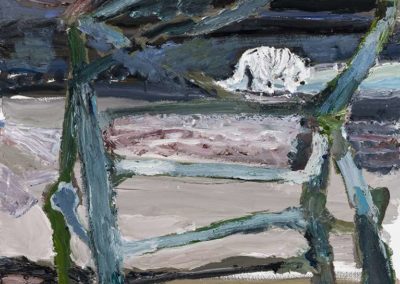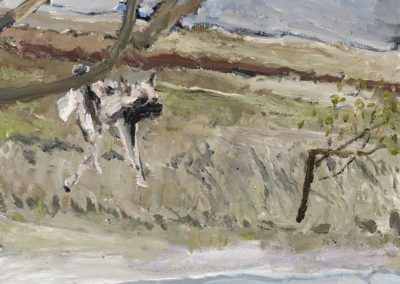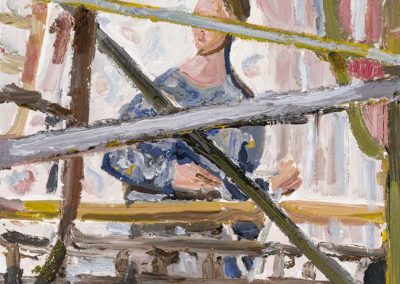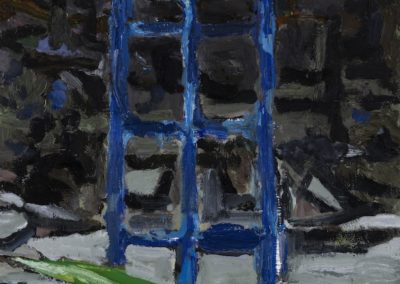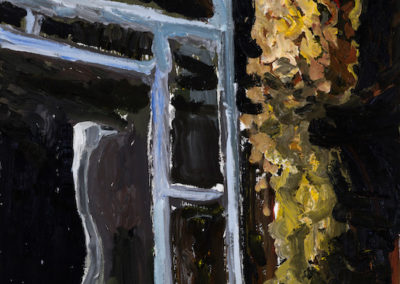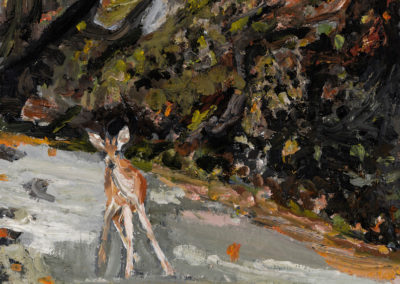Échafaudages (Scaffolds)
(catalogue)
April 26 to May 26, 2018
Opening reception April 26 – 5 to 7 pm
****
Beaux-arts des Amériques (bAdA)
3944, rue Saint-Denis
Montréal, Québec H2W 2M2
Tel: 514.481.2111 / Fax: 514.481.7113
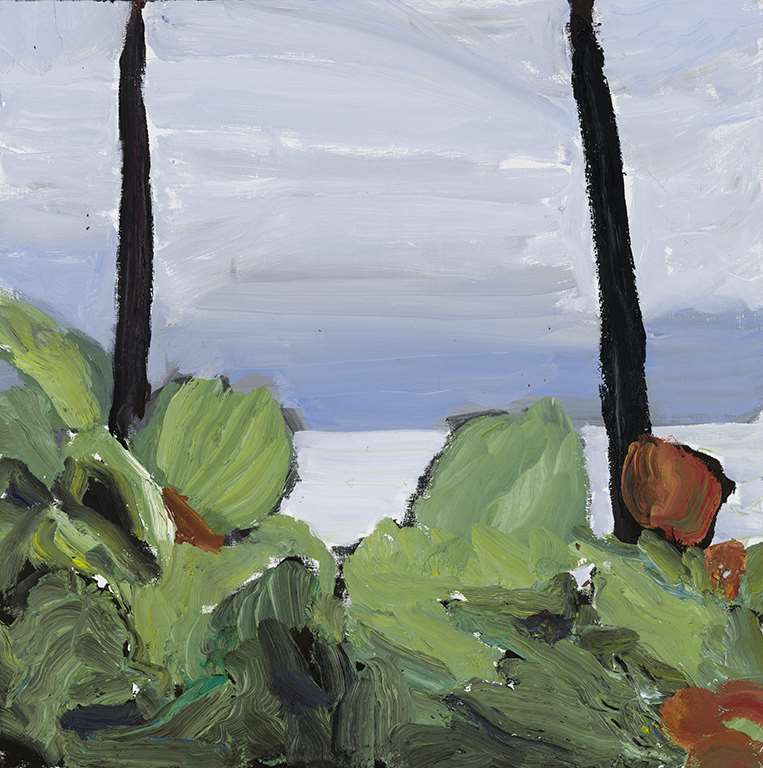
INTRODUCTION (catalogue)
“When I returned after a few weeks and found the scaffolding gone, and [the thing] standing there in all the clearness of its outline and precise form, I shall never forget how disgusted I was, and also how interested. “
(from “A Plea for the Vague” an essay by Sir George Grove)
The current exhibition of paintings by Christopher Mangiaracina is entitled Échafaudage (Scaffolding). This reference to the grid, an emblem of modernism for 20th century artists, can be seen throughout his art practice. It was a tool for attaining what the Bauhaus artist Herbert Bayer called ‘the extended vision’ and postmodernists used it as a paradigm for making art. This body of work attests to the fact that the images he creates remain firmly rooted in art forms of the past and in the act of painting.
Mangiaracina began his career in the 80s when the renewal of interest in figurative art was initiated by a group of artists who have come to be known as the School of London. In 1976, R B Kitaj, an American artist living in London, organized an exhibition at Hayward Gallery to show exclusively figurative drawings and paintings by Michael Andrews, Frank Auerbach, Francis Bacon, Lucian Freud, David Hockney, Howard Hodgkin, and Leon Kossoff. This was to have a resounding effect on the art world, which at the time, was dominated by minimalism, conceptual and abstract art. Mangiaracina, an emerging artist at the time, embraced this new wave and never looked back. He has been painting his thought-provoking works for some forty years. Many of these works return to the same familiar everyday objects and scenes – comprehensible images that are becoming more and more important as technology speeds up.
Often stripped of their context, the objects he chooses, even his occasional flirtation with landscape, become abstract symbols that we might characterize as Still Life as in the work of his his heroes, Giorgio Morandi and Paul Cézanne. The objects often are simply a device for the act of painting. In this way, he calls us to see the world around us and to find beauty even in the most unremarkable.
We have been representing Mangiaracina since the early 90s and he has never failed to inspire us. We are proud to present these new paintings, which convey such a sense of poetry and timelessness.
Lucienne Lefebvre Glaubinger
Jacqueline H Stoneberger
Montréal, Canada 2018
The Necessary Scaffolds: Christopher Mangiaracina’s Recent Paintings
Ricardo Pau-Llosa
Life is an orchard of needs. Like vines, the scaffolds mount, and more than images and thoughts, their fruit is attitudes, tones. Gestures are a summation of tone. We know this through the lens of Christopher Mangiaracina’s recent paintings. The scaffolds, rooted shelters of human constructs, exiled from function and freed to share in the life in the imagination, order our landscapes and bridge the artifice of nature with the lushness of the mind.
Heron and egret have migrated onto the mise en scène to embody us, to act upon us in their wordless human role. They began their journey in Sōtatsu to prove they too, and not just poems, are immortal. They wrote the sky who now, in these paintings, configure shadow into causal skeletons, rising in joints, planes, and beams. And the birds mingle there as witness must and teach scaffolds they no longer belong to builder or executioner. They are the strength of nets without the capture. They rhythm nature’s being, our sense of it gleaned, harvested. Living pictographs, the jagged paths of language. No perch but on the earth, the birds are the scaffold’s teachers and brethren. A wind, a breeze, and how the bones of labor must also sway. They both nest here in paint.
The fire and flesh of paint, from Velázquez to Soutine, seeks the origin of tales in images. Not in the story itself—that train. The conception, in gesture, of what orbits the image. A hunger, the growl of time, invades. The dog’s punctual rage, the tiger’s blanching thirst. What innocence can outshine that of the predator gripped in urgency? The fawn, too, must tilt in the edict storm. From the inner landscape of objects—that mind we project upon things through representation—comes ambiguity. The scaffold as habitat, the heron as compass flag and winged avenue. We are on the road back from false purities to find the lucid scumbled world one with feeling and theatre.
We reflect on matter, not to find reductions but the communion of mind, passion, and world. Text and circuit but auguries of the motion that rhymes the imagination with its cherishings. Current’s eloquence anatomizing shadow and the light it frames, mountains demanding tactility—these, too, admissions of the divine impatience of being. Palette strategic: that green should rind gold and redden like heart, that greys sand and once golds cream into memory. That verdant coconuts should beckon the sunset rose into the blue porcelain of their luminous cage, to make home of predicament. The opal of earth and sea, even it requires the facet interstices, metered into harmony. A bar masks the woman’s eyes from us that we may wonder what journey she holds in the abacus of prayer, the scaling, the orchard aisles grasped at once from ground and flight.
(Richardo Pau-Llosa, Author of seven volumes of poetry, Art Critic, and Curator)

